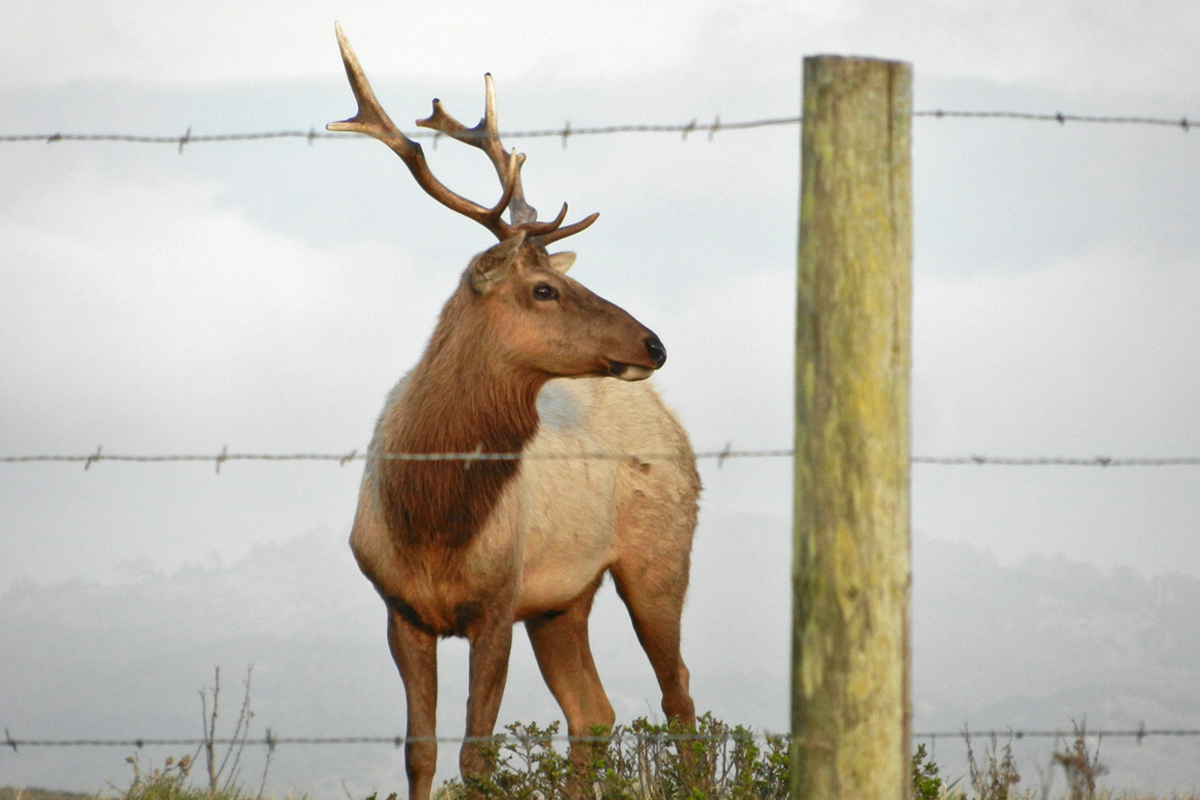Take down the fence and save Tule elk at Point Reyes
In 2022, the National Park Service (NPS) accepted public comments on its planning process related to “wildlife, resource, and wilderness management issues” at Tomales Point in the Phillip Burton Wilderness within Point Reyes National Seashore in Northern California. At issue was—and still is—the fate of native Tule elk, the smallest and rarest elk subspecies in North America, which are endemic to California.
Unfortunately, Tule elk are nearly extinct across California and rapidly and needlessly dying at Point Reyes and within the Wilderness due to NPS mismanagement. The NPS General Management Plan for Point Reyes keeps elk trapped behind an 8-foot-tall fence, expands commercial agricultural use, and extends cattle ranch leases for up to 20 years.
Incredibly, the NPS currently has the largest Tule elk herd at Point Reyes fenced into an enclosure at Tomales Point in the Phillip Burton Wilderness. Not only is there not enough forage for the confined elk, but recent drought years have caused scant freshwater to dry up, leaving the elk dying of hunger and thirst, as documented by visitor photographs of dead and emaciated elk. This is because the NPS prioritized the nearly 6,000 cattle that continue to graze within the national seashore, decades after the government paid fair market value to acquire private ranches and end livestock grazing there. Some 28,000 acres of public land at Point Reyes continues to be grazed despite the original agreement to end this commercial use.
Fortunately, thanks in part to public outcry by Wilderness Watch and our supporters, in 2023 the NPS proposed a new direction that’s a good one, and we appreciate it. The plan is to remove the fence and allow Tule elk to naturally roam in the Wilderness and across Tomales Point as they previously did for centuries. But it’s not a done deal, and the National Park Service (NPS) will undoubtedly face pressure from the influential ranching industry to keep the fence up and limit Tule elk numbers.
Wilderness Watch supports Alternative B, the NPS preferred option. Removal of structures in the Wilderness and the fence just outside of the Wilderness is the right choice. Alternatives A and C should be opposed as they degrade the Wilderness and endanger Tule elk. However, some other changes to Alternative B should be considered.
We are advocating that the NPS remove water structures unlawfully built in the Wilderness by non-motorized means. We are also calling for an end to cattle grazing—cattle should not be allowed in Point Reyes or the Wilderness anymore as per the original agreement. Additionally, NPS must not use herbicides in the Wilderness—removing cattle and the fence would help mitigate the spread of invasive plants. Finally, NPS should allow natural fires to burn and shape the wilderness landscape rather than using manager-ignited fire to create artificial conditions, which can facilitate the spread of non-native invasive plants.
Photo: Harry via Flickr
Contact Us
Wilderness Watch
P.O. Box 9175
Missoula, MT 59807
P: 406-542-2048
E: wild@wildernesswatch.org
Minneapolis, MN Office
2833 43rd Avenue South
Minneapolis, MN 55406
P: 612-201-9266
Moscow, ID Office
P.O. Box 9765
Moscow, ID 83843

